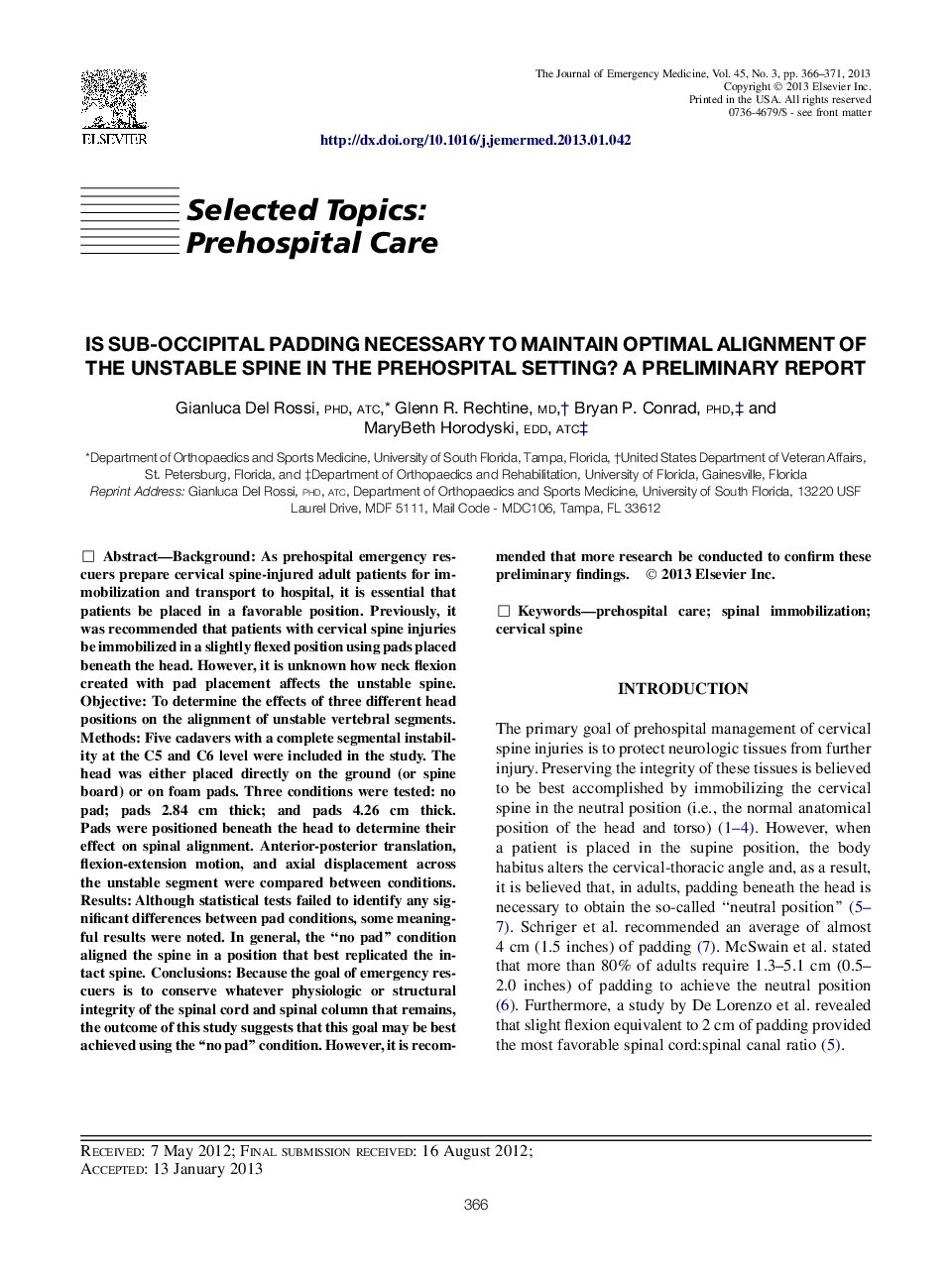| Article ID | Journal | Published Year | Pages | File Type |
|---|---|---|---|---|
| 6085485 | The Journal of Emergency Medicine | 2013 | 6 Pages |
BackgroundAs prehospital emergency rescuers prepare cervical spine-injured adult patients for immobilization and transport to hospital, it is essential that patients be placed in a favorable position. Previously, it was recommended that patients with cervical spine injuries be immobilized in a slightly flexed position using pads placed beneath the head. However, it is unknown how neck flexion created with pad placement affects the unstable spine.ObjectiveTo determine the effects of three different head positions on the alignment of unstable vertebral segments.MethodsFive cadavers with a complete segmental instability at the C5 and C6 level were included in the study. The head was either placed directly on the ground (or spine board) or on foam pads. Three conditions were tested: no pad; pads 2.84 cm thick; and pads 4.26 cm thick. Pads were positioned beneath the head to determine their effect on spinal alignment. Anterior-posterior translation, flexion-extension motion, and axial displacement across the unstable segment were compared between conditions.ResultsAlthough statistical tests failed to identify any significant differences between pad conditions, some meaningful results were noted. In general, the “no pad” condition aligned the spine in a position that best replicated the intact spine.ConclusionsBecause the goal of emergency rescuers is to conserve whatever physiologic or structural integrity of the spinal cord and spinal column that remains, the outcome of this study suggests that this goal may be best achieved using the “no pad” condition. However, it is recommended that more research be conducted to confirm these preliminary findings.
